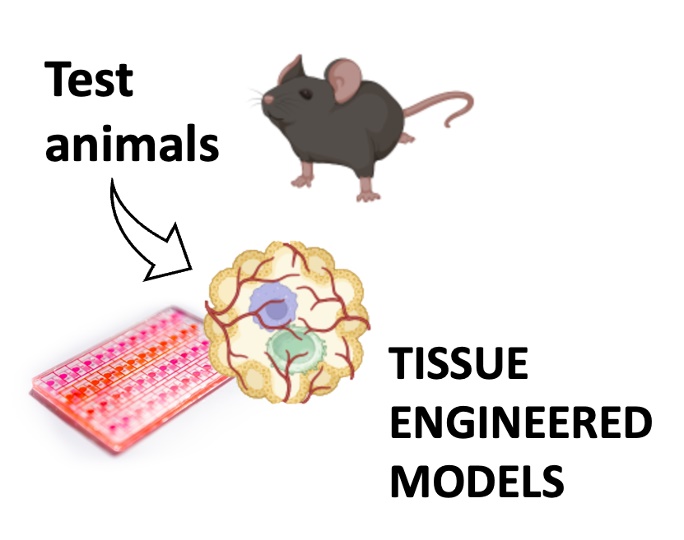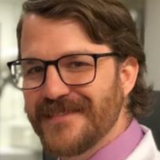
The 3Rs principle (Replacement, Reduction, Refinement) guides the development of ethical, alternative methods in biomedical research, emphasizing the minimization of animal use and enhancing animal welfare. Refinement can include for instance optimization of operating procedures in case animal models cannot be avoided.
Considering new and advanced artificial tissue models, tissue-engineered constructs including spheroids and organoids, represent a pioneering alternative to animal models, where biomaterials in combination with encapsulated living human cells are used to mimic natural tissue structures, facilitating drug testing and disease modeling while reducing reliance on animal models.
Most recently, microfluidics technology has enabled the development of highly complex and dynamic tissue engineered models that can not only maintain human cells but can also provide vital biochemical (i.e., secreted molecules) and biomechanical (i.e., fluid mechanical forces and/or mechanical loading) aspects found in human organs and musculoskeletal tissues. The utilization of is a revolutionary advancement, to miniaturize human organ/tissue functions onto microfluidic lab-on-a-chip platforms, providing accurate, human-relevant data for pharmaceutical development and disease research,
These two bioengineering advances further embody the 3Rs ethos by potentially entirely replacing animal testing with human cell-based models, which to date can be considered the most challenging of the ‘3Rs’.

Priv.-Doz. Dr. Mario Rothbauer
Cluster coordinatormario.rothbauer@meduniwien.ac.at

Assoz.-Prof. Dr. Stefan Tögel
Cluster MemberT: 0043-1-40400 - 40980
stefan.toegel@meduniwien.ac.at
Eva Ingeborg Reihs, MSc
Cluster Memberingeborg.reihs@meduniwien.ac.at
Jonathan Strauß, MSc.
Cluster Memberjonathan.strauss@meduniwien.ac.at
Further literature:
- Rothbauer M*x, Reihs EI*, Fischer A, Windhager R, Jenner F, Toegel S. A Progress Report and Roadmap for Microphysiological Systems and Organ-On-A-Chip Technologies to Be More Predictive Models in Human (Knee) Osteoarthritis. Front Bioeng Biotechnol. 2022 Jun 15;10:886360. doi: 10.3389/fbioe.2022.886360.
- M Rothbauer, C Eilenberger, S Spitz, BEM Bachmann, SRA Kratz, EI Reihs, R Windhager, S Toegel and P Ertl. Recent Advances in Additive Manufacturing and 3D Bioprinting for Organs-On-A-Chip and Microphysiological Systems. Frontiers in Bioengineering and Biotechnology 2022, 10, DOI: 10.3389/fbioe.2022.837087
- M Rothbauer*,x, BEM Bachmann*, C Eilenberger*, SRA Kratz*, S Spitz*, G Höll, and P Ertl. „A Decade of Organs-on-a-Chip Emulating Human Physiology at the Microscale: A Critical Status Report on Progress in Toxicology and Pharmacology“ Micromachines 2021, 12 (5), 470, DOI: https://doi.org/10.3390/mi12050470
- M Rothbauer, H Zirath, and P Ertl. „Recent advances in microfluidic technologies for cell-to-cell interaction studies”. Lab on a Chip, 2018, 18, 249-270, DOI: https://doi.org/10.1039/C7LC00815E
- Tannenbaum J, Bennett BT. Russell and Burch's 3Rs then and now: the need for clarity in definition and purpose. J Am Assoc Lab Anim Sci. 2015 Mar;54(2):120-32. PMID: 25836957; PMCID: PMC4382615.
